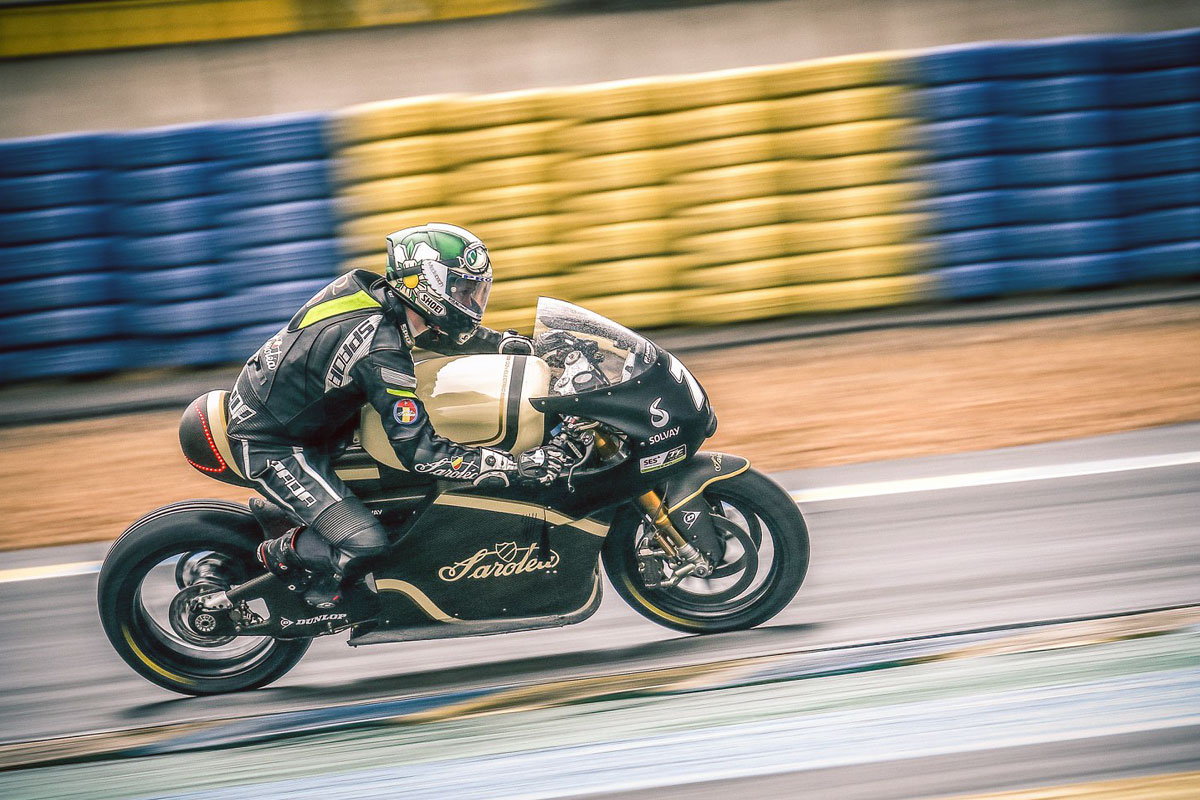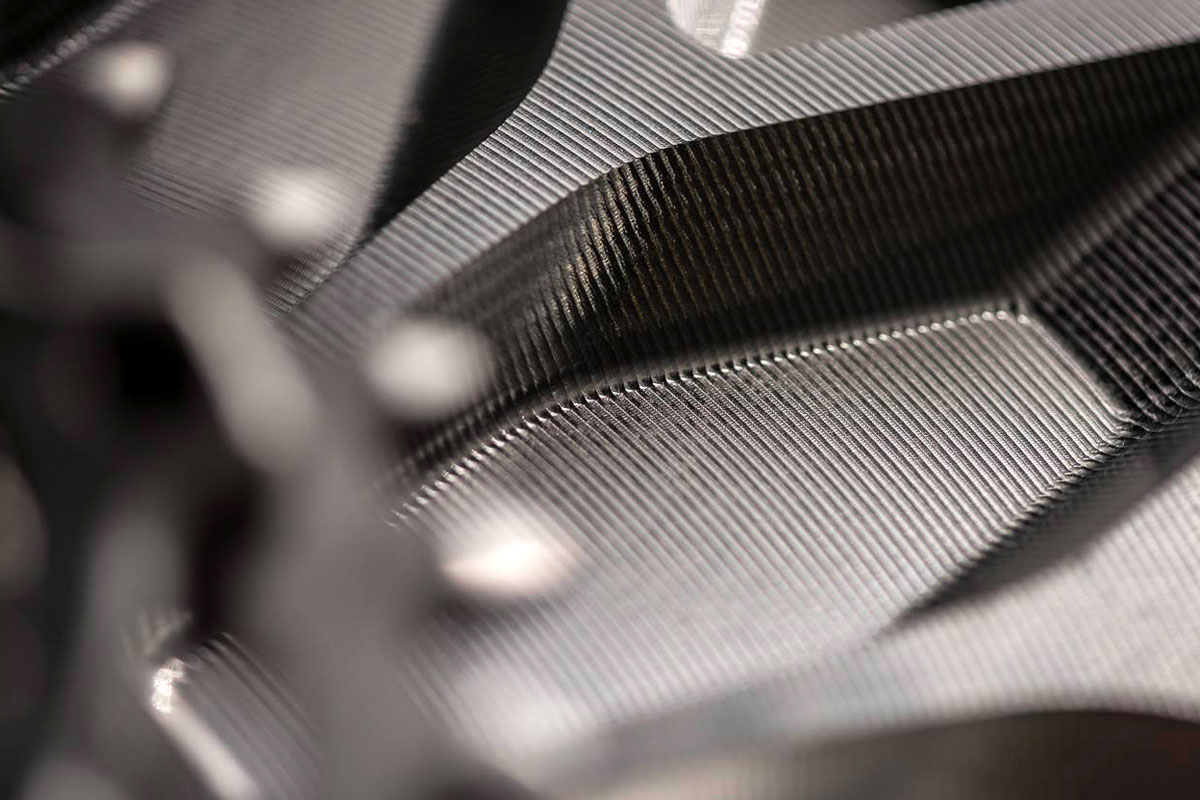An electric motorcycle with a 330km range and a 25 minute charge time. The game is quickly changing in the world of electric bikes. Thinking back to when Harley unveiled their LiveWire concept in 2014 it had a dismal range of 85km. In just 4 short years battery technology has advanced enough for companies to finally produce electric motorcycles that have equal to and in some cases better mileage than their fossil-fuelled equivalents. One of the new kids on the block is the Manx7, the first production motorcycle by Saroléa and those impressive figures were pulled straight from its spec sheet.
Unless you’ve been living under a rock you’ll know electric motorcycles are capable of some pretty impressive performance. This is certainly the case with the Manx7. Its air-cooled, brushless DC motor has 120w of power and a whopping 450Nm of torque. This equates to a blistering 0-100kmh time of only 2.8 seconds. The Manx7 also weighs a respectable 217kg, including the battery pack. This was achieved by building the bikes monocoque body and swingarm from carbon fibre. Additionally, the bike runs light-weight OZ Racing wheels, uses a plethora of machined aluminium components, and is held together using titanium Pro-Bolts that weigh 45% less than steel equivalents. Weight distribution has also been very carefully considered with an even 50/50 split between the front and rear. Combine all that with top of range components from Öhlins, Beringer and Dunlop and you’ve got a pretty impressive handling package.
As for top speed, the Saroléa Manx7 will reach a software limited 240kmh (150mph). The bikes range varies depending on your battery choice. The 18kWh option will take 280km while the 22kWh gets you the 330km range. All the batteries are interchangeable so owners can easily upgrade and are capable of quick charging to 85% full in a mere 25 minutes.


The Saroléa Manx7 is, at its core, a race-bred motorcycle. The original bike was developed specifically for competing in the Isle of Man TT Zero, an electric motorcycle version of the coveted Isle of Man TT. Twin brothers Torsten and Bjorn Robben are the driving force behind the project and acquired the rights to the Saroléa motorcycles brand in 2010. Saroléa was a Belgian manufacturer that produced their first motorcycle in 1850. This makes it one of the world’s oldest motorcycle brands still producing bikes. The brothers great uncle André Van Heuverzwijn raced Saroléa motorcycles in motocross events during the 50s so the decision to acquire the brand was an obvious one. The decision to develop an electric motorcycle, however, was much more spontaneous.
I’m intrigued by the world of electric vehicles. So I reached out to Torsten Robben for some exclusive insights into the development of the Manx7.

How and why did you start down this path of developing an electric motorcycle?
During my first visit at the Isle of Man TT back in 2009, I had the opportunity to see the first 100% electric motorcycle race, the TT Zero. I was quite impressed, but I was also convinced that with my expertise with Formula 1 and Aerospace projects I could have a shot at victory. Of course, it would be a huge challenge. Together with a small team, we started to acquire knowledge of battery technology and electric motors. I also started the first designs of what would eventually become our race bike, the SP7.

Have your race bikes been performing well at the TT Zero?
In 2014 skilled road racer, Robert Wilson took the all-carbon SP7 to an amazing 4th place, at an average speed of 93.50 mph, just 0.4 seconds off the podium. It was an amazing experience. There were significant technical improvements for the 2015 IOM TT Zero, which resulted in an increase in the average speed to 106.51 and a solid 5th place overall. At the 2016 IOM TT Zero, Dean Harrison and Lee Johnston raced a completely new machine, built on the steady progress of the past two seasons. Unfortunately, we had some safety issues on the starting grid and I made the difficult decision not to start the race. It was a huge disappointment for all the team involved. However, safety is and will always be our top priority. And in racing, it’s important to learn, even from failures.
In 2017, with more knowledge and experience, Dean Harrison took the third version of the SP7 to a healthy 4th place, winning a bronze replica with an average speed of 108.064 mph. From this year on, we launched a new development programme which is focussing on the energy management and increasing the intelligence of the machines. For me, it was quite logical to head for endurance racing at the 24h of Le Mans. We started testing and we have applied to compete in the 2019 edition. A new challenge that we are ready to take on together with our partners.
How long has the Manx7 been in development for?
I would say since the beginning, but serious planning started in 2014 when we entered the Isle of Man TT Zero for the first time.

Why did you decide to name the bike the Manx 7?
The word Manx refers to Isle of Man’s inhabitants. The SP7 (Saroléa Project 7) was born on the Island with the TT. We have gotten a huge amount of support and respect from the people on the Isle of Man. The 7 is due to two reasons. Firstly, we were 7 people involved in the first SP7 construction and secondly because it’s my favourite number, a lucky number in some cultures. Barry Sheen had the number 7 and the car with the most victories at Le Mans 24h was guess what? The number 7.
What are the major differences between your TT bikes and the road-going Manx7?
First of all, some components we are using for the SP7 racing bike are not homologated for the road. For example, we changed our Ohlins FGR300 racing forks with their highest spec road legal fork, the FGR200. The other major change is the battery configuration. In the SP7 it’s nearly impossible to swap the batteries in a reasonable amount of time. With the MANX7 we decided, from the very beginning of the design process, that the battery packs should be removable. This would allow our customers to get upgraded battery packs when new capacities become available. With the packs that come back to us we plan to give them a second life, converting them into wall storage. If necessary we can also disassemble the packs and recycle the batteries.
On the Manx7 the electric motor, inverter, wheels, and brakes are identical to the SP7. The SP7 and the MANX7 also share the same carbon fibre monocoque chassis design, carbon fibre swingarm and carbon fibre fairing.

After this first limited edition do you have plans for higher production numbers?
This year we are building the first 20 bikes; our ‘Founders Edition’. In following years we will be increasing production year after year. For 2019 we have planned for a production run of 80 bikes. 2020 we aim to produce 250 Manx7 motorcycles which is the absolute maximum number of bikes to be produced per year. Delivery of the first bikes is scheduled for Q3 and Q4 of 2018.
And lastly… Why do you think the major motorcycle manufacturers have been so slow in taking up electric and hybrid technologies?
I think most of them are very careful when it comes to moving to the electric space. It’s something we have seen in the car industry as well. To the major motorcycle manufacturers, there is no real threat at this moment. And the market is still too small to start mass producing machines. Some of them are entering the electric market with smaller, lighter motorcycles and even electric bicycles. Batteries are still very expensive and if you want to produce motorcycles that can do +200 miles it’s not possible to compete with the pricing of combustion engine counterparts.
We are not looking to compete with the existing products on the market. And knowing our bikes are all built by hand, we are not waiting on the mass market. We see there is a demand for high-quality innovative products today. For us, the first goal is to produce the best possible electric motorcycles in terms of range, performance and safety.

Along with all the previously mentioned components Saroléa has teamed up with several other brands to complete the road-going Manx7. The smoked windscreen, for instance, was supplied by Fabbri Accessori. Aftermarket parts specialists Rizoma contributed items such as the mirrors, lighting and footpegs. The chain that drives the rear wheel is from Regina and the Sportsmart TT tyres are by Dunlop.
For many riders (myself included) the Manx7 will be out of reach. The starting price for the 14kWh version is €42.975 while the 22kWh will set you back €48.760. Is it worth the money? I certainly think so, and if the Saroléa Manx7 is an indication of what lies ahead in the world of electric motorcycles there’s plenty to get excited about.
SAROLÉA MOTORCYCLES
Images by Rob Mitchell



